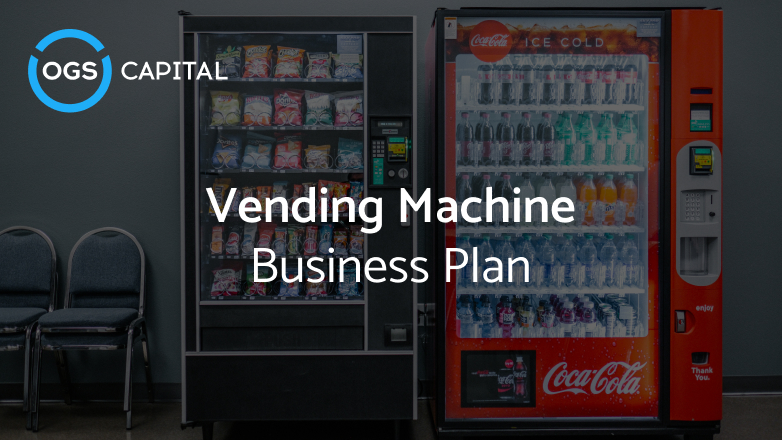Table of Content
1. What is an online thrift store business plan?
A well-crafted business plan is essential for establishing and running a successful online thrift store. This plan outlines the goals, objectives, and strategies that will guide the venture. The online thrift store business plan pdf plan should include key considerations such as initial operational costs, marketing requirements, selling strategies, and an estimated budget. The offline thrift store business plan should also identify the target audience for the online store and the competitive landscape that the store will face. Additionally, it should provide a clear timeline for when profitability is expected and identify any potential risks that may arise.
It is important to include a financial projection in the plan. This projection should outline the anticipated annual revenue and expenses related to operating the store.
2. Why do we need an online thrift store business plan?
An online thrift store business plan sample is essential for any business looking to launch an online thrift store. Having a clear ecommerce business plan consultants is essential for maintaining focus on your business objectives and strategies. Developing a plan is crucial for starting and expanding your business. It provides you with a clear and comprehensive understanding of the necessary steps that need to be taken.
3. How to write an online thrift store business plan
When writing a business plan for the virtual online thrift store, start by thoroughly researching the industry and potential markets. Identify the target audience for the store and the associated competitors. Determine the sales and marketing strategy, and identify any potential operational and financial risks. Then, develop an estimated budget and timeline for profitability. Finally, include financial projections and forecasts by the e-commerce business plan consultants that include estimated revenue and expenses, as well as a general feedback loop that can be used to measure progress and success.
4. Executive summary
The Attic Shop CIC is a modern online store business plans shop where you can purchase clothing and other items at discounted rates. Efforts are made to make second-hand procurement sustainable, affordable, and accessible to all.
Similar to the e-commerce business plan sample, their mission is to provide you access to quality, gently used merchandise while being mindful of the environmental impact. Through their thrift store platform, they aim to make second-hand shopping fun, easy, and satisfying for shoppers of all clothing and budgets.
At The Attic Shop, they source their products from consignment stores and their own internal collection. They also offer a platform where you can sell your own used items, making it convenient and satisfying to shop while supporting the circular economy.
The target audience for this includes millennials who are searching for stylish and affordable merchandise that is within their budget. They also seek to engage with individuals who are passionate about environmentally-friendly practices and interested in a sustainable fashion.
5. Company analysis
Mission
The mission of The Attic Shop is to make affordable, high-quality used merchandise available to people across the United States. They strongly believe that second-hand goods have the ability to reduce poverty, minimize waste, and provide value to customers in their online store business model.
At The Attic Shop, our vision is to be the preferred thrift store in America, providing a diverse range of new and used items at unparalleled prices.
6. Structure and background
The Attic Shop is a privately owned business that focuses on offering customers throughout the United States with high-quality used items.
We carefully select our products from trustworthy suppliers, prioritizing local sourcing.
This ensures that our customers can confidently purchase certified second-hand items that meet safety standards. The Attic Shop aims to be America’s top choice for secondhand goods, with a strong focus on exceptional customer service, sustainability, and supporting those in need.
7. Market (industry) analysis
The thrift store industry is growing rapidly due to the increased interest in second-hand choices for goods. The growing trend of waste reduction, coupled with the increasing costs of new items, has been a contributing factor to this growth.
The thrift store industry is projected to maintain its competitiveness and profitability in the next five years, with an estimated growth rate of 3.7%. By 2023, the secondhand and resale market is projected to reach approximately $53 billion, as predicted by thredUP, an online marketplace for reselling items.
The growth of online thrift stores is primarily fueled by the advancements in technology that have made them more user-friendly, convenient, and cost-efficient compared to traditional retail stores.
8. Competitor analysis
- ThredUp: ThredUp is an online consignment and thrift company where you can find clothes, accessories, and shoes at great discounts. They collaborate with various thrift stores, consignment shops, and other vendors that specialize in secondhand apparel. This partnership enables customers to access a vast online selection of clothing options.
- Poshmark: Poshmark is an online marketplace for second-hand clothing and shoes, with a focus on women’s fashion. They collaborate with various shops, including vintage boutiques, thrift, and consignment stores, as well as luxury clothing resellers.
- Vinted: Vinted is an online thrift store that specializes in selling used clothing and shoes. They have a diverse range of options available for women, men, and kids, including clothing and accessories. Additionally, they offer virtual styling services to help customers create their desired looks. One popular feature on Vinted is their “bargain bin,” where shoppers can find great deals on various items.
- The RealReal: The RealReal is a luxury consignment store that specializes in high-end designer and contemporary fashion, accessories, jewelry, and home decor. Their offerings are carefully curated and available at discounted prices.

9. Products and services
The online thrift store business plan template will offer the following products and services:
- An array of pre-owned items, from clothing to furniture and antiquities
- A wide selection of books
- Comprehensive customer service and support
- An efficient delivery system
- An easy-to-use online shopping experience
10. Sales and marketing plan
This business plan template for an online thrift store section outlines the strategy for growing the online thrift store.
- Promotions: In the clothing store business plan, the company will aggressively market its thrift store using traditional media, such as print and radio advertising, as well as online promotional strategies, such as search engine optimization, online display ads, and social media campaigns. They will also leverage a network of affiliates to help spread the word about the store.
- Public Relations: They will seek out public relations opportunities to bolster the store’s reputation locally, such as sponsoring events, participating in charity drives, and being involved in the local community.
- Measurement: To measure the success of their promotional efforts, they will monitor website traffic, track online sales, and analyze the results of their online ad campaigns. They will also track customer satisfaction by surveying customers and monitoring customer reviews.
- Expansion: With successful measurements, the company plans to expand its online store into more markets, working with more partners and affiliates. Their ultimate goal is to dominate the online thrift store market.
11. Operational plan
The business plan checklist operational plan for the online thrift store business will cover the management of the online store, marketing, staff, delivery, and other operational aspects of running the online store.
Management:
A team of professionals with experience in online marketing, e-commerce, web design, customer service, and inventory management will manage the online store. The team will also handle customer relations, customer service, payment, and other operational aspects of the business.
Marketing:
The online thrift store will use online and offline marketing to reach its target audience. Online marketing will include email blasts, search engine optimization, content marketing, and social media marketing. Offline marketing strategies will include radio, print, billboards, and direct mail.
Staff:
The online store will require a small staff team to help manage the store. The staff will include customer service representatives, inventory managers, and marketing staff.
Delivery:
The online store will use a third-party delivery service to handle the delivery of goods purchased from the store.
12. Evaluation/assessment
The business plan includes a comprehensive analysis of the market, identifying target customer demographics, outlining the products and services offered, assessing the competitive landscape, detailing the organizational structure, describing the marketing plan and operations plan. Additionally, it provides financial projections and estimated startup costs.
The business plan writers provide comprehensive information about different aspects of the online thrift store. This includes its market positioning, differentiation from competitors, as well as donation acquisition and processing strategies.
The plan also examines various sources of revenue, strategies for acquiring customers, and ways to enhance user engagement on the platform.
13. Management team
The management team for how to write a business plan for an online thrift store includes:
- CEO: Responsible for overseeing the business operations, developing and implementing strategies, and managing all day-to-day operations.
- CFO: Responsible for managing finances, handling customer payments, bookkeeping, and analyzing financial reports.
- Marketing Manager: Responsible for developing and executing marketing strategies, identifying new target audiences, and analytic tracking of customer segmentation data.
- IT Manager: Responsible for developing and maintaining the company website, keeping the technology infrastructure up to date, and providing customer service support.
- Purchasing Manager: Responsible for sourcing products, negotiating with suppliers, and managing inventory.
- Product Catalog Specialist: Responsible for managing and cataloging products, creating descriptions, and managing pricing.
14. Projection and financial planning
- Start-up costs:
- Business registration and filing fees – $1,000
- Legal and professional fees – $2,000
- Website design and development – $3,000
- Systems development and programming – $2,000
- Marketing and advertising – $3,000
- Office supplies and equipment – $3,500
- Insurance and permits – $800
- Technology infrastructure – $4,000
- Facility rental/leases – $2,000
- Labor costs – $3,500
- Miscellaneous – $1,000
Total Start-up Costs – $25,800
2. Sales Projections:
Assuming a 20% commission on sales, the projected sales and corresponding revenue and profits for the first year are:
- Sales ($10,000/month): $120,000
- Revenue ($2,000/month x 20% commission): $24,000
- Profits ($24,000 – $25,800 start-up costs): -$1,800
3. Strategic Plan:
- Establish strong relationships with vendors for regular supply of inventory.
- Develop a user-friendly and engaging online marketplace.
- Create an effective marketing and advertising plan.
- Make use of data analytics to improve customer experience and marketing efforts.
- Strengthen relationships with existing customers and increase customer loyalty.
- Incorporate sustainable logistical solutions with a short turnaround time.
- Implement strategies to reduce wastage and maximize profits.
4. Financial Plan:
The financial plan for the business continuity plan consultants comprises the following components, which will be implemented to achieve the desired financial targets:
- Establish a line of credit and secure investors for additional capital.
- Monitor cash flows, reduce costs, and reduce operational expenses.
- Leverage digital and technological solutions to reduce manual work and increase efficiency.
- Reduce inventory waste and optimize inventory turns.
- Set up clear accounting systems with bookkeeping and audit procedures in place.
- Utilize funds productively and reinvest profits wisely.
- Monitor financial performance closely and maintain up-to-date financial records.
15. Discover True Value: Welcome to OGS Capital, Your Trusted Source for a Successful Online Thrift Store
If you’re an aspiring entrepreneur aiming to launch a successful online thrift store, creating a solid business plan is crucial. With over a decade of expertise in developing tailored business plans for online thrift stores, OGS Capital business plan writers has successfully supported numerous entrepreneurs in realizing their goal of owning and operating thriving enterprises.
Our skilled consultants provide tailored business plan services to assist you in navigating the startup process and optimizing your investment. No matter the size or scope of your online thrift store, we have the services to meet your specific needs and goals. Whether you’re starting small and focused on a local market or planning to expand nationwide, our comprehensive solutions are tailored for your success.
Let us assist you in translating your vision into a tangible plan that will serve as your roadmap throughout each step of the process. OGS Capital understands that every client has unique goals and objectives. That’s why our team of experienced professionals will work closely with you to create a personalized business plan tailored specifically to your needs. We’ll collaborate on developing strategies that are solid and effective, ensuring your success in this competitive market.
Discover the immense possibilities of online thrift stores with our expert guidance. We’ll work together to create a comprehensive plan that ensures your success in this exciting industry.
16. FAQ
Q. Can thrift resellers make money?
Absolutely, thrift resellers can indeed make money. They achieve this by purchasing items from thrift stores such as Goodwill, Salvation Army, or other second-hand shops and then reselling them on platforms like eBay, Amazon, or their own online stores. Some resellers focus on brand-name items or vintage clothing and are able to turn a profit by acquiring these pieces at a lower cost and subsequently selling them for higher prices.
Q. How lucrative is the online thrift store business?
The online thrift store industry offers a promising opportunity for businesses to thrive. As more consumers seek affordable deals on pre-owned items, the demand for online thrift stores continues to rise. In fact, projections from Crunchbase predict that the global market for online thrift shopping will reach a staggering $84 billion by 2025. With such potential for growth and profitability, it’s easy to see why this industry is becoming increasingly attractive to sellers.
Download Online Thrift Store Business Plan in PDF
OGSCapital’s team has assisted thousands of entrepreneurs with top-rate business plan development, consultancy and analysis. They’ve helped thousands of SME owners secure more than $1.5 billion in funding, and they can do the same for you.



















